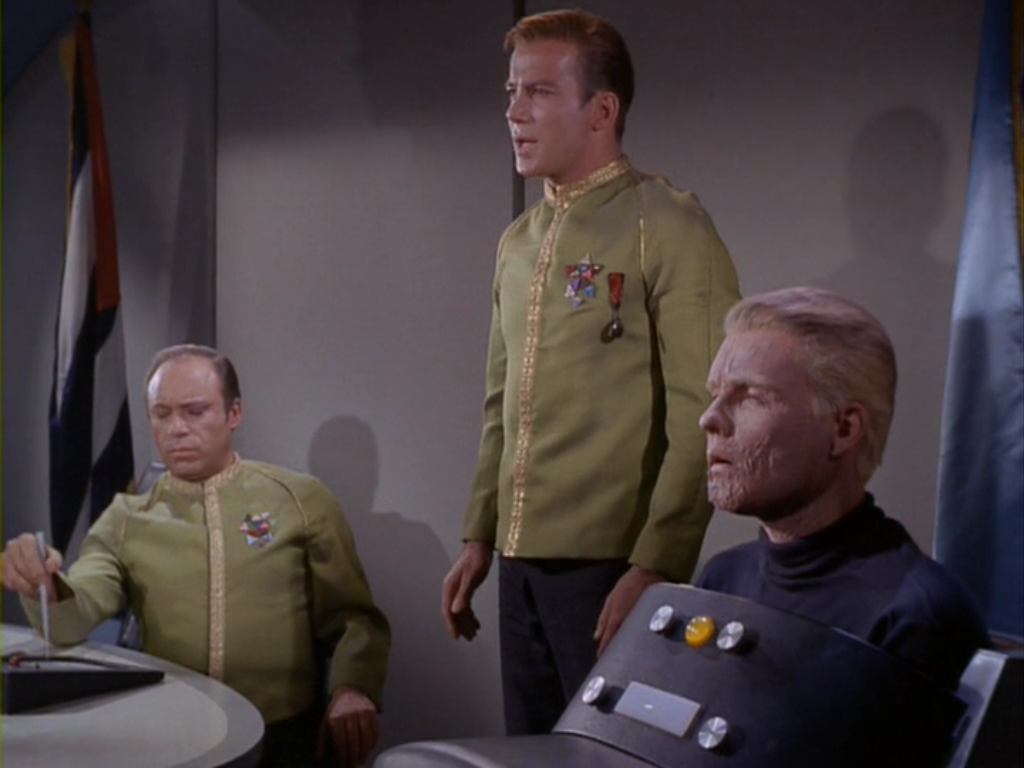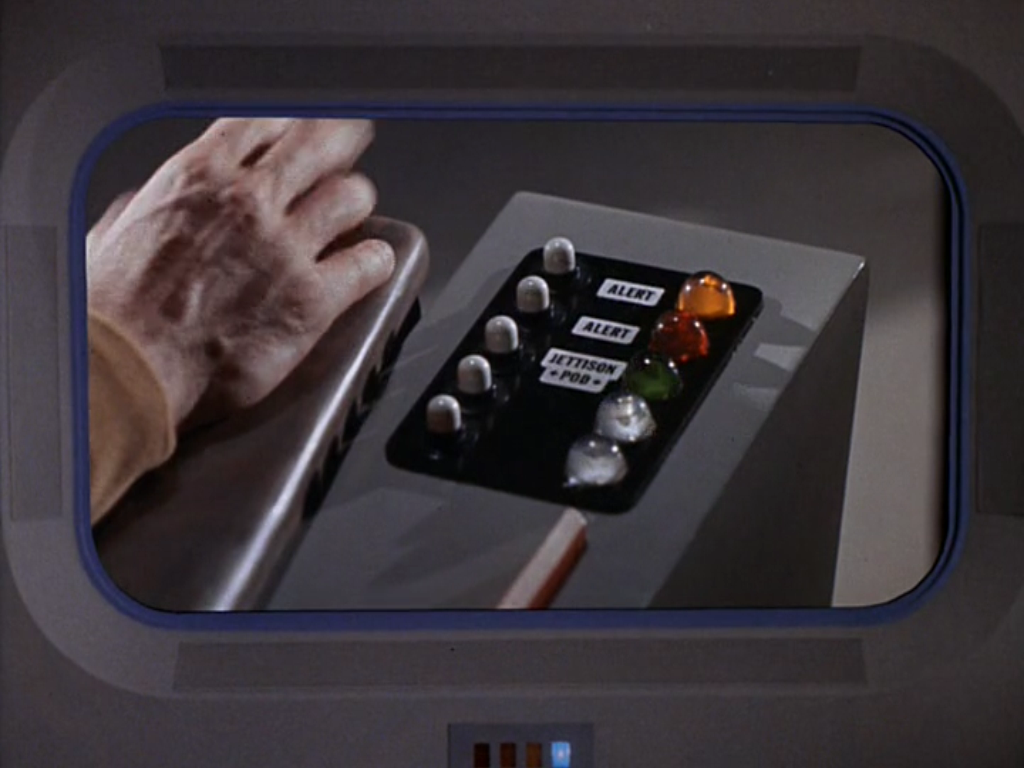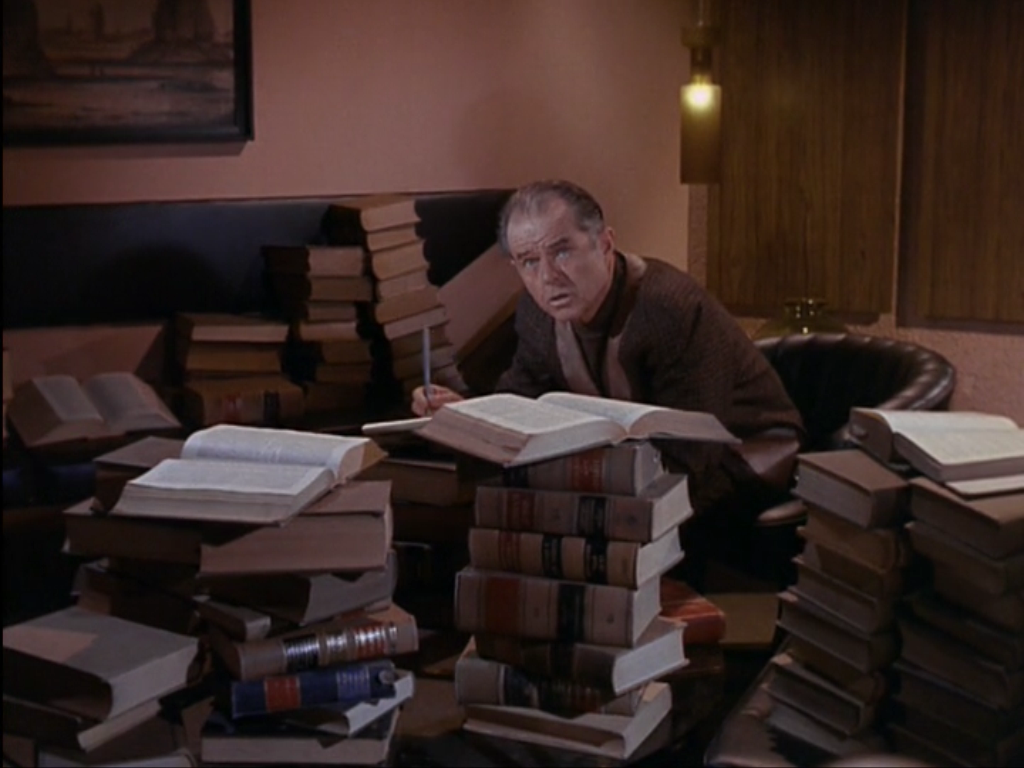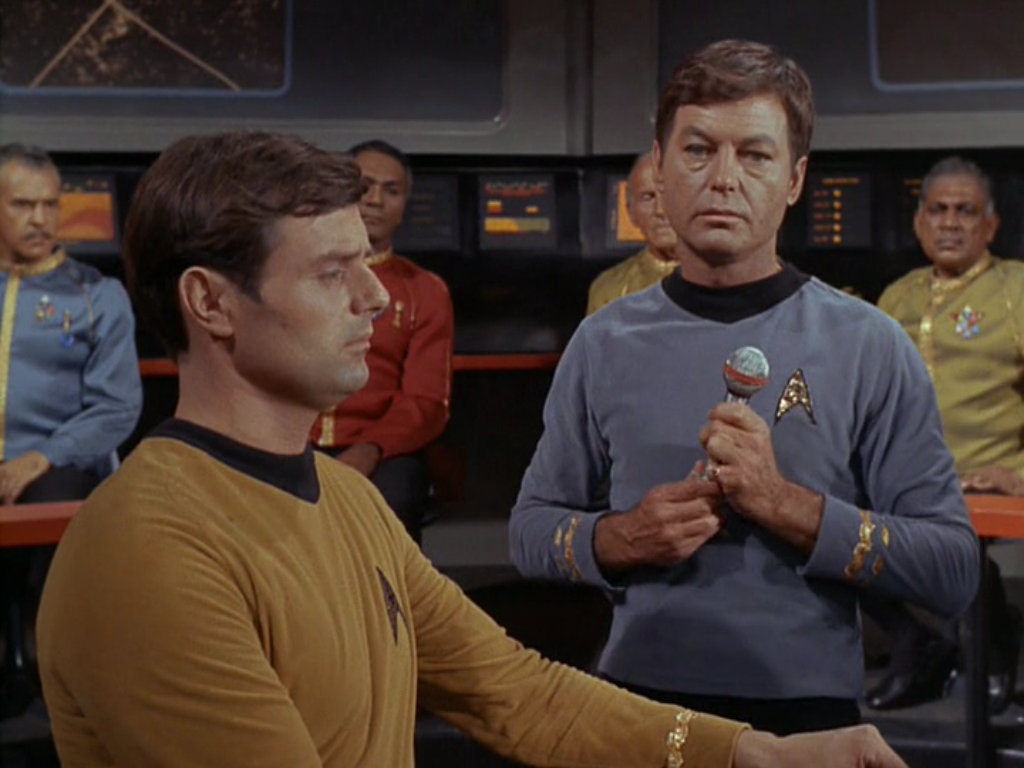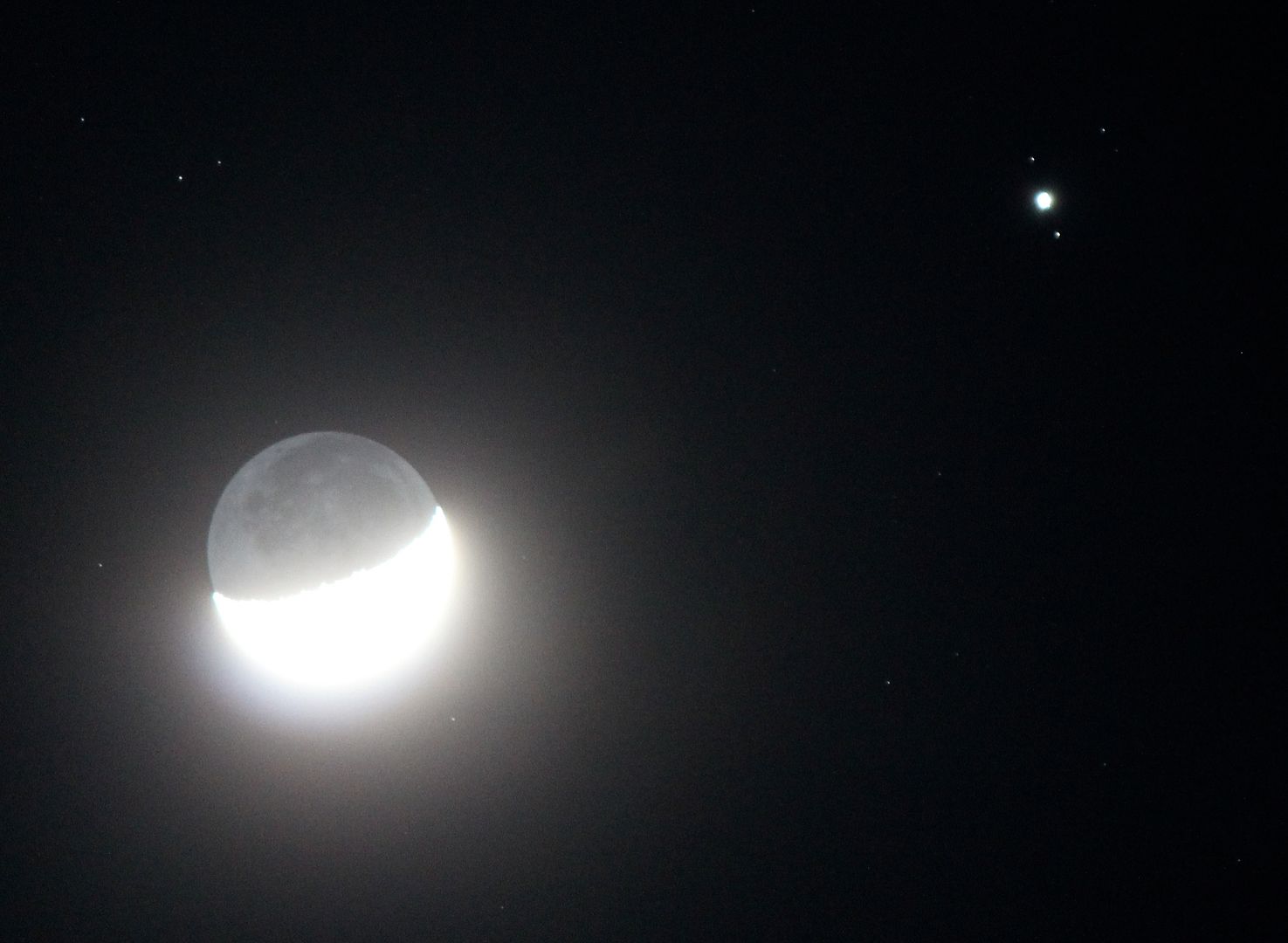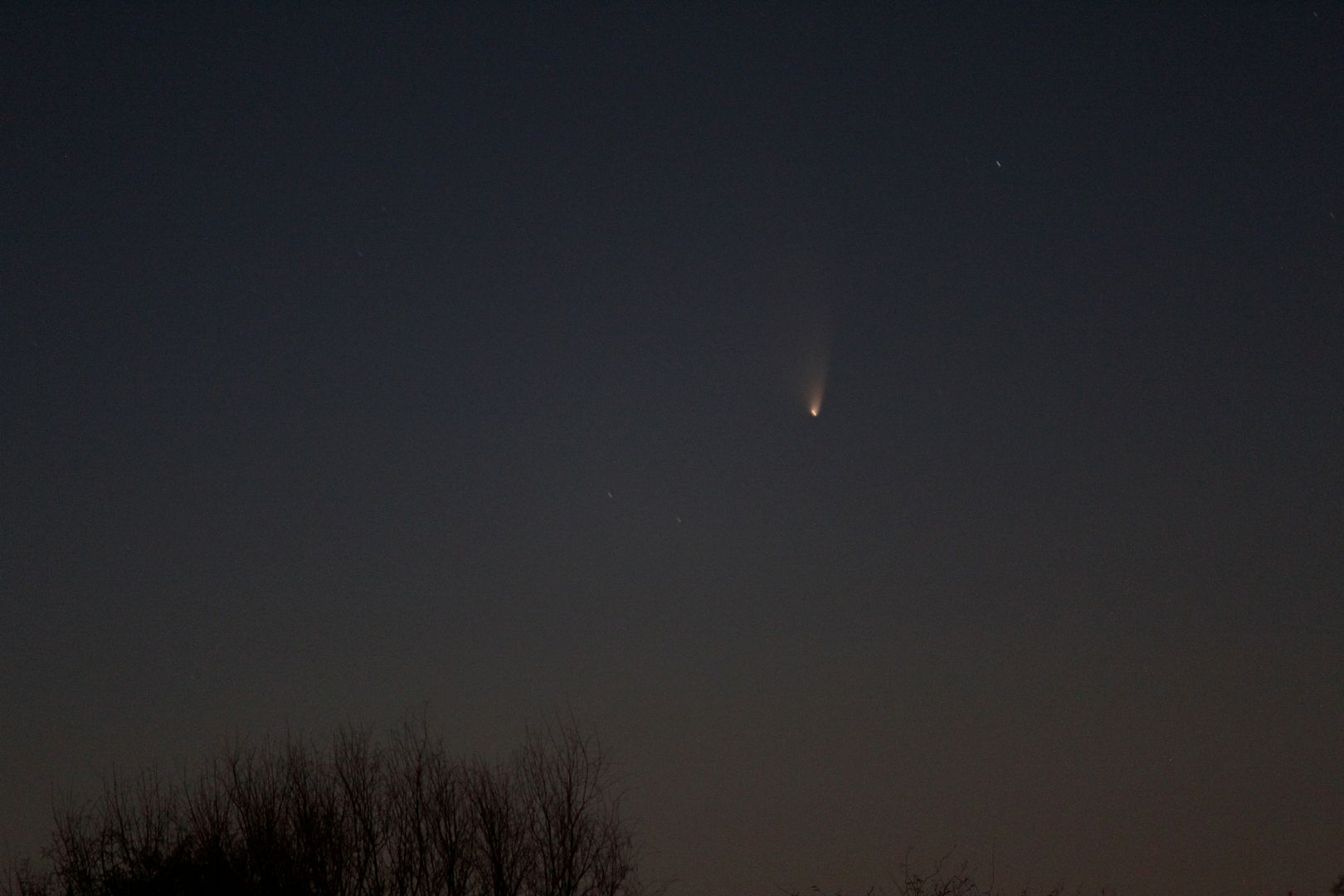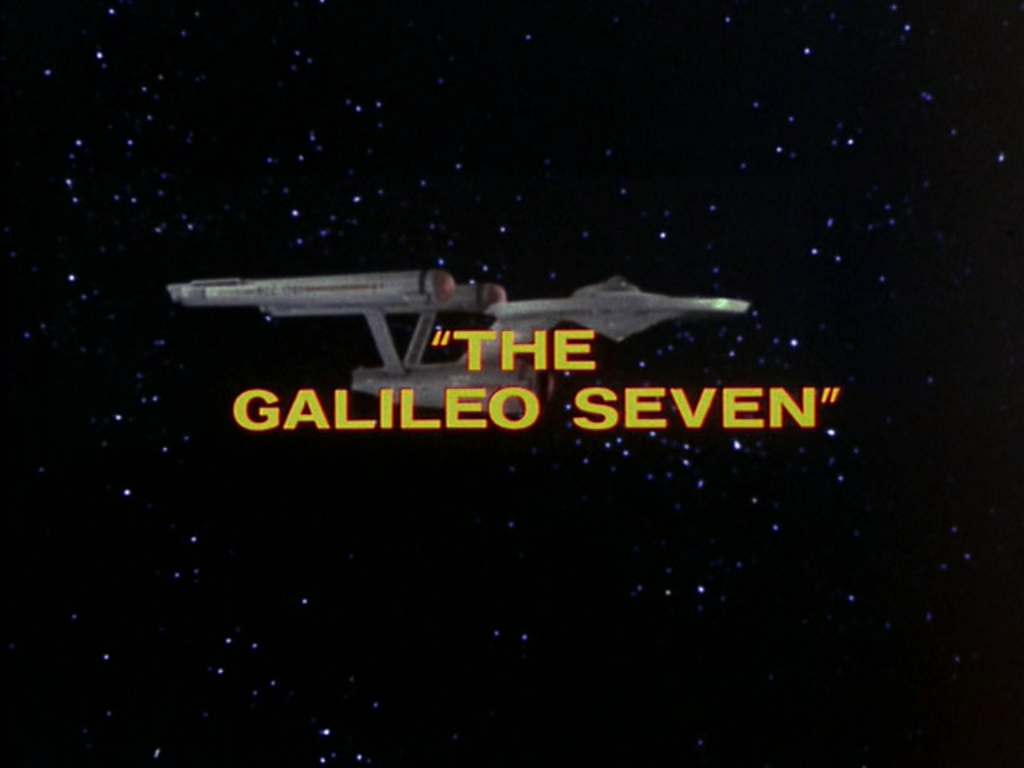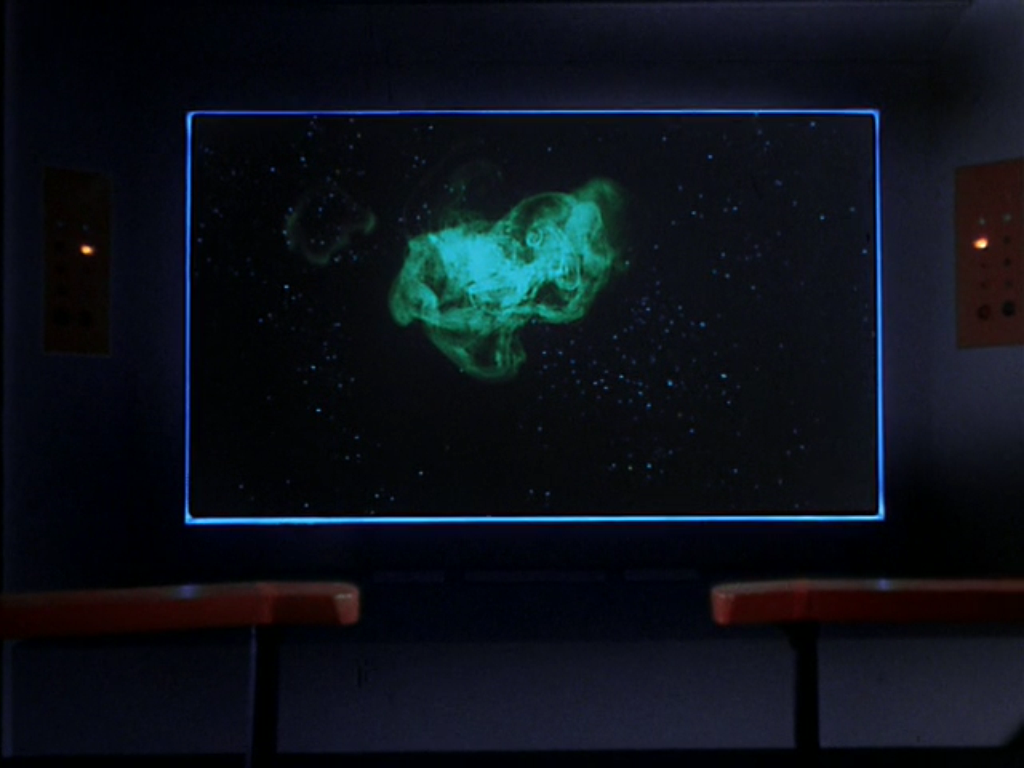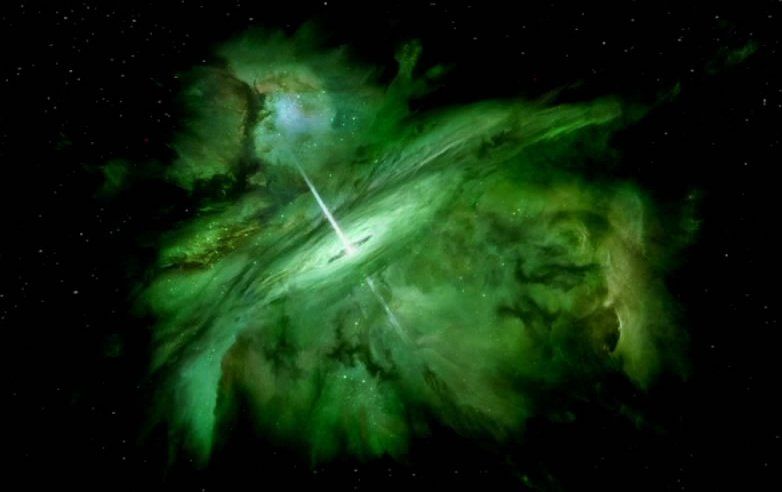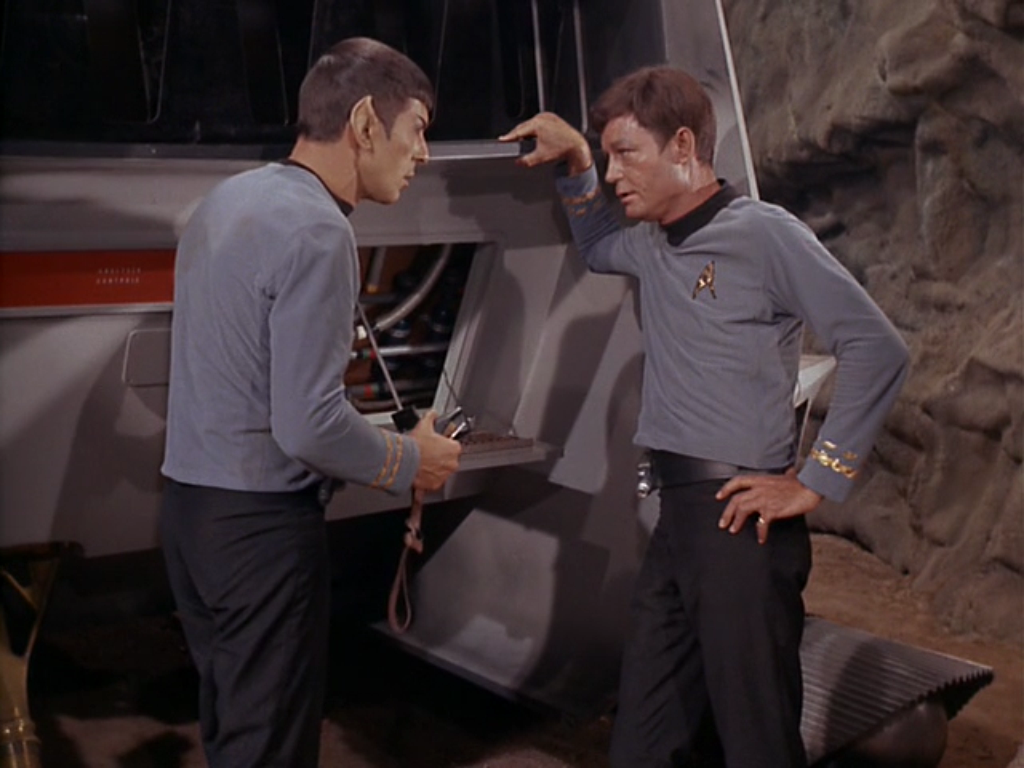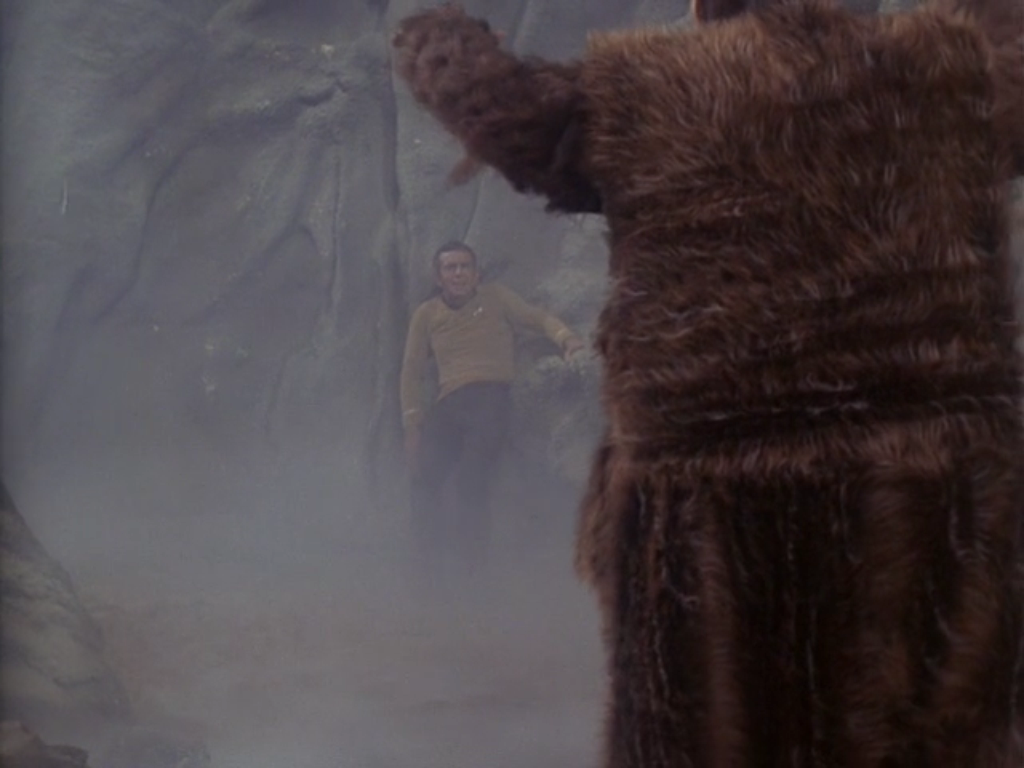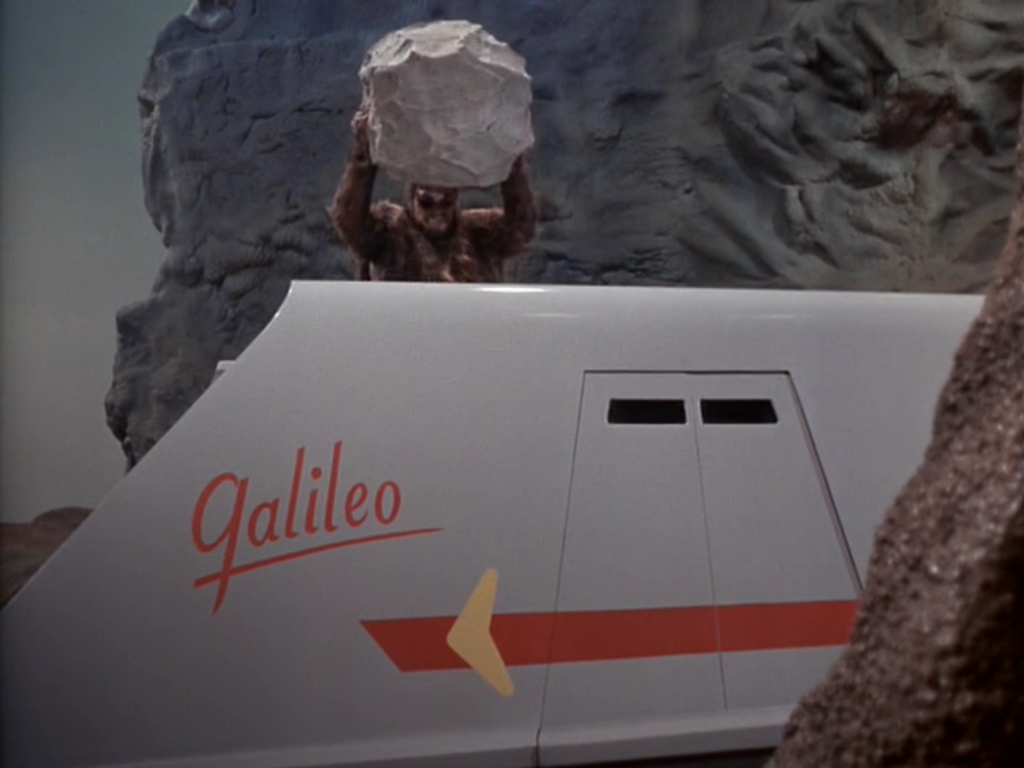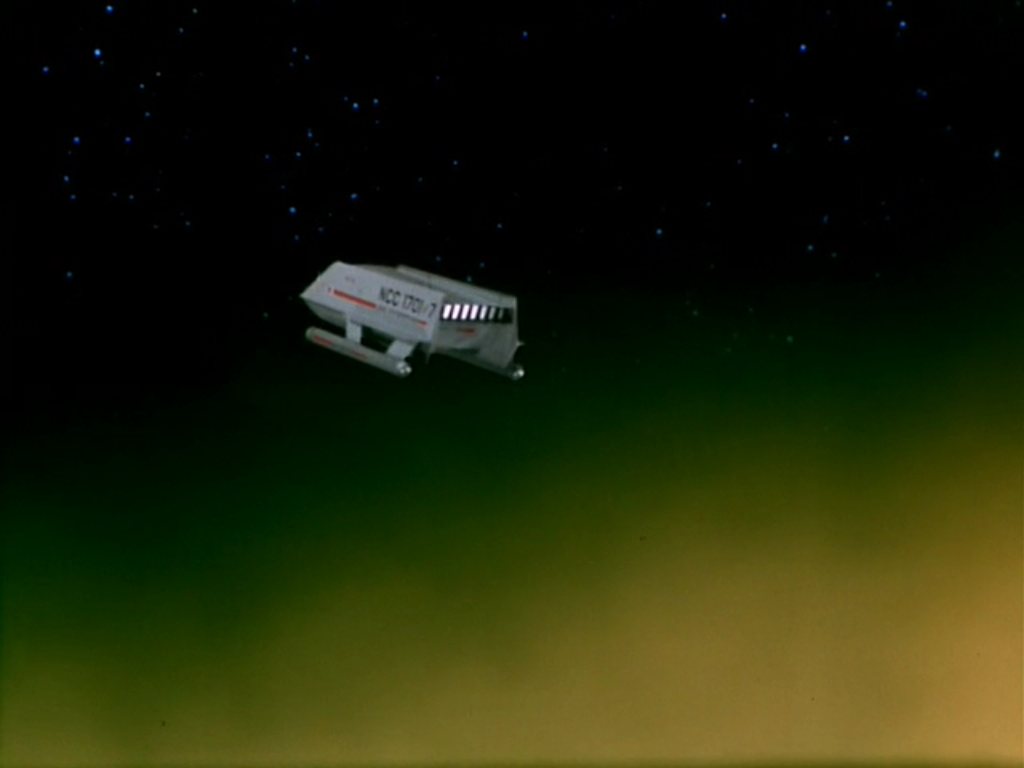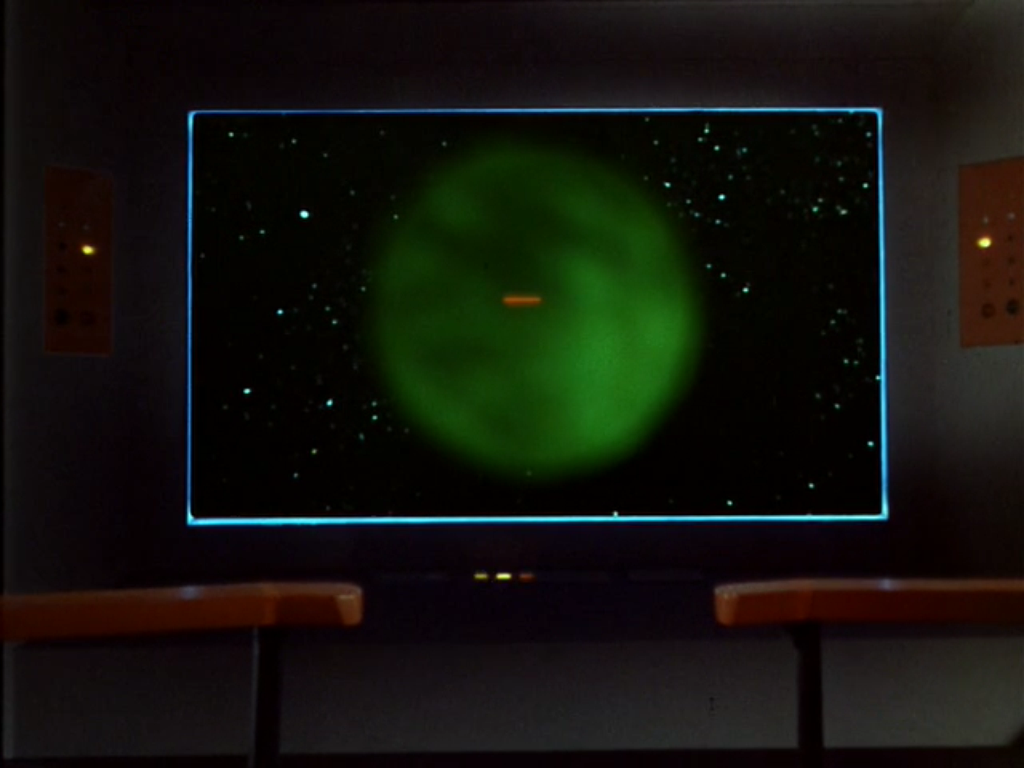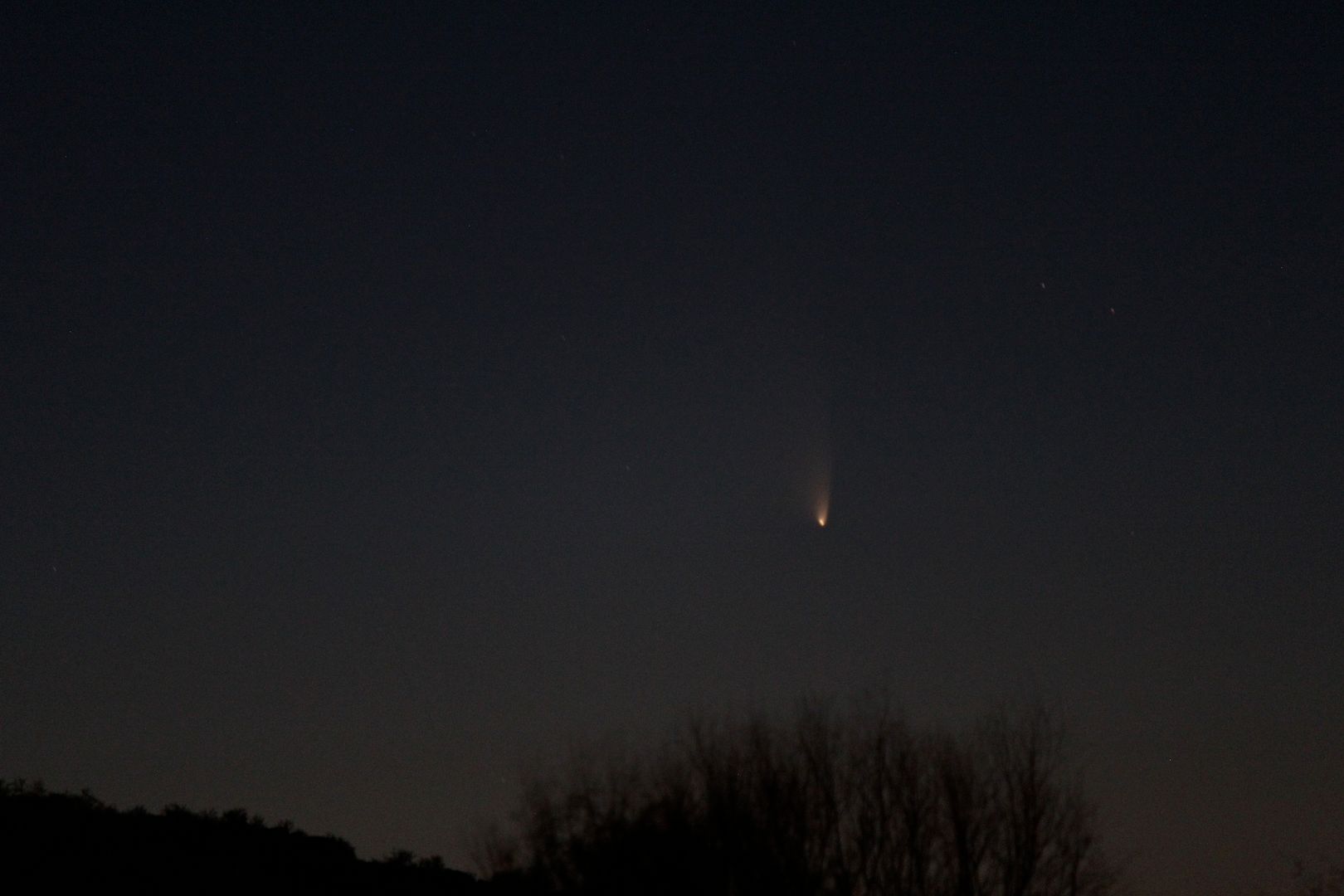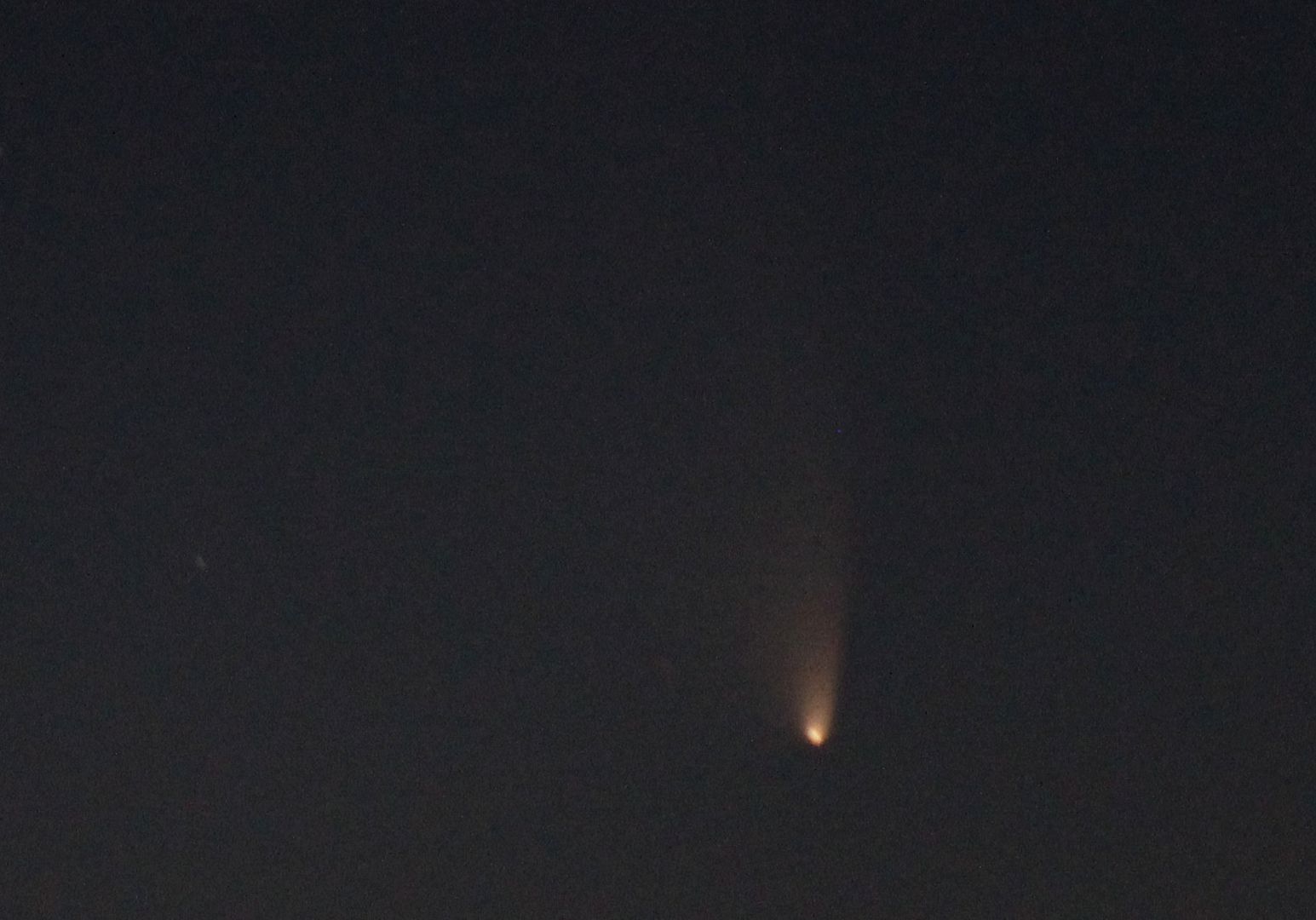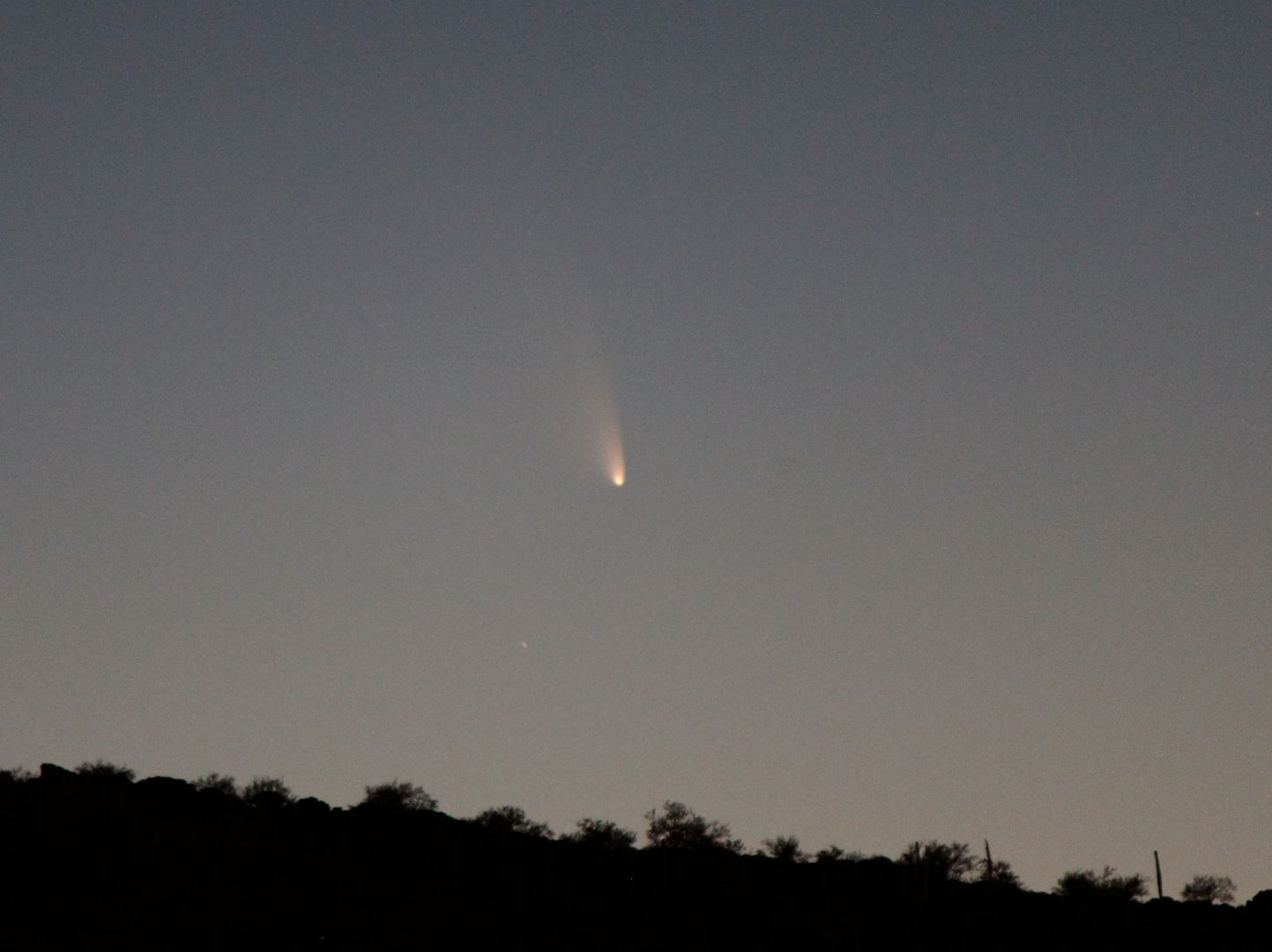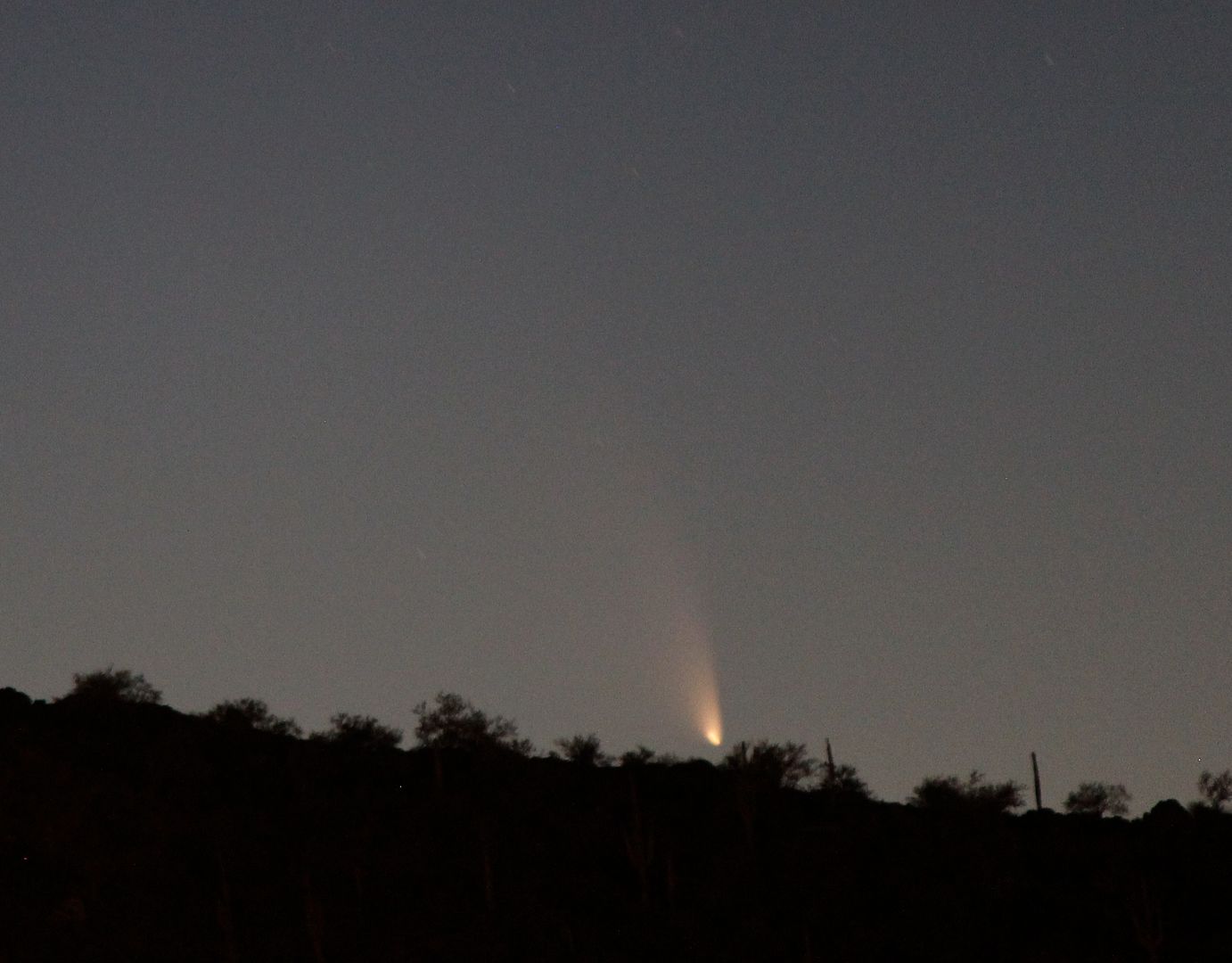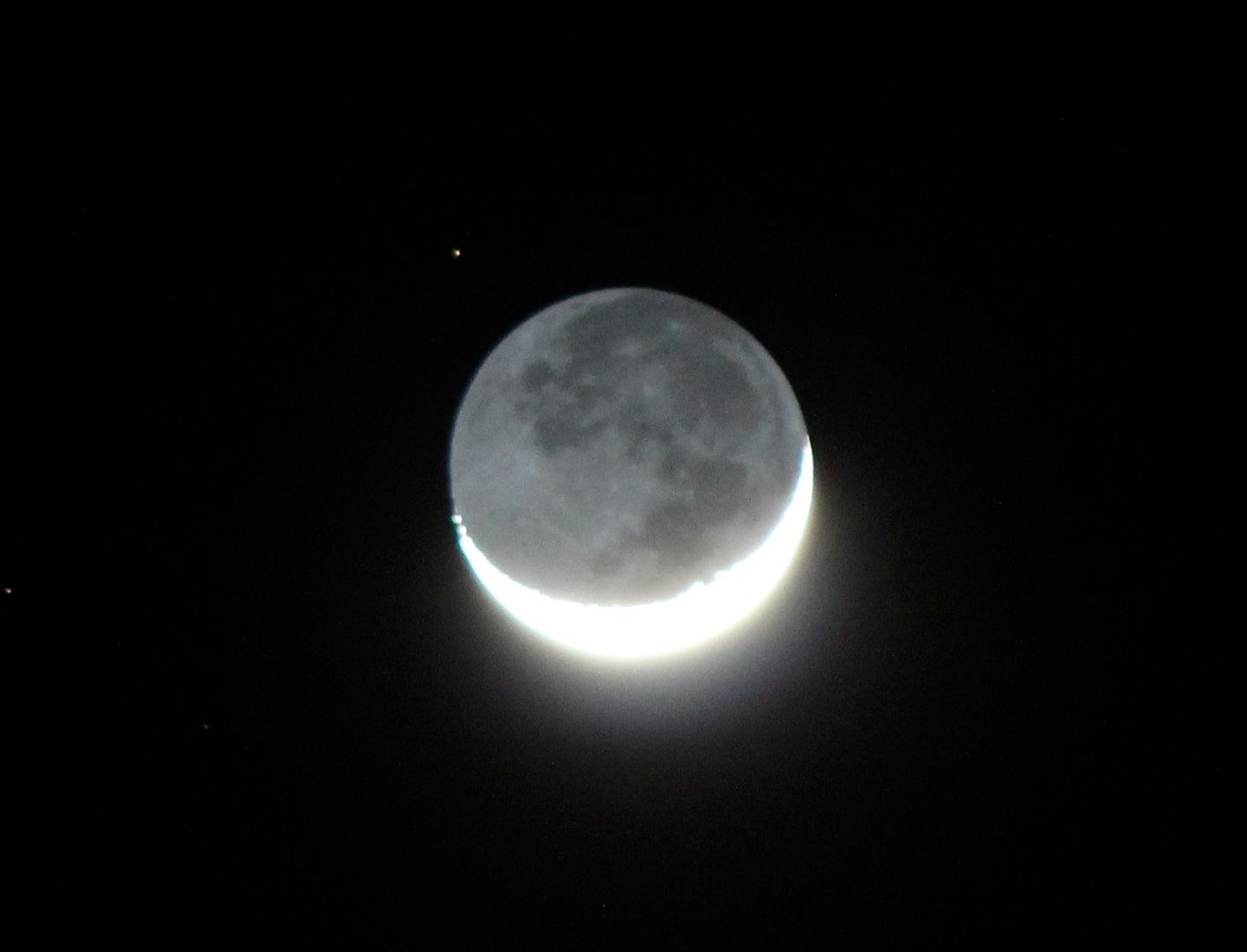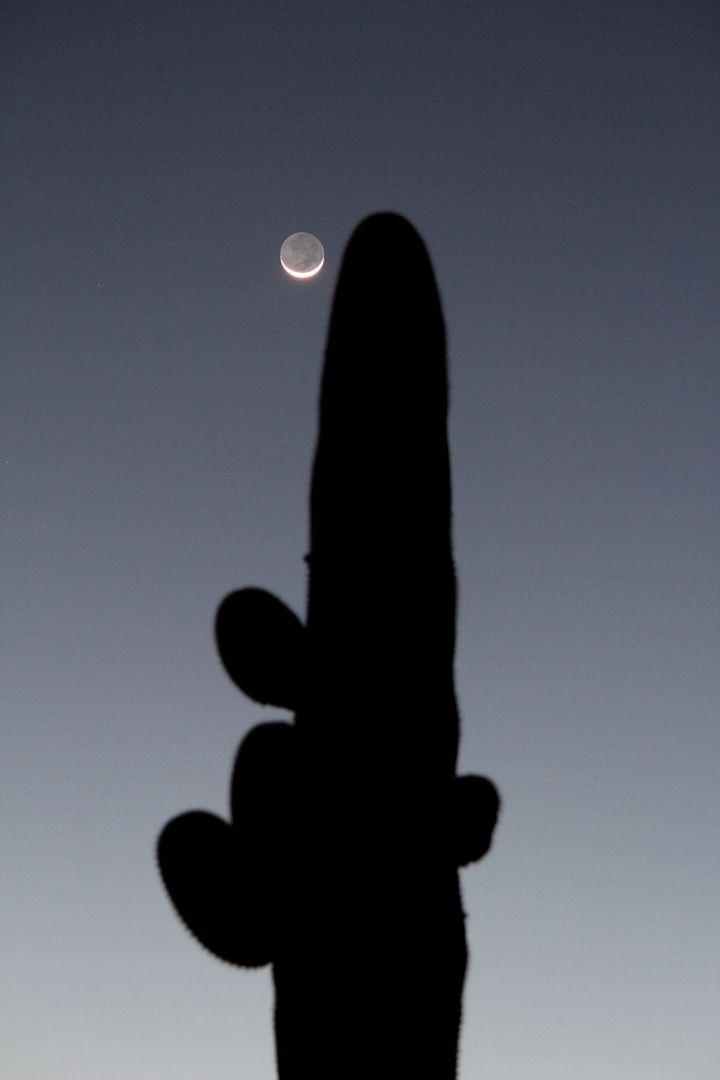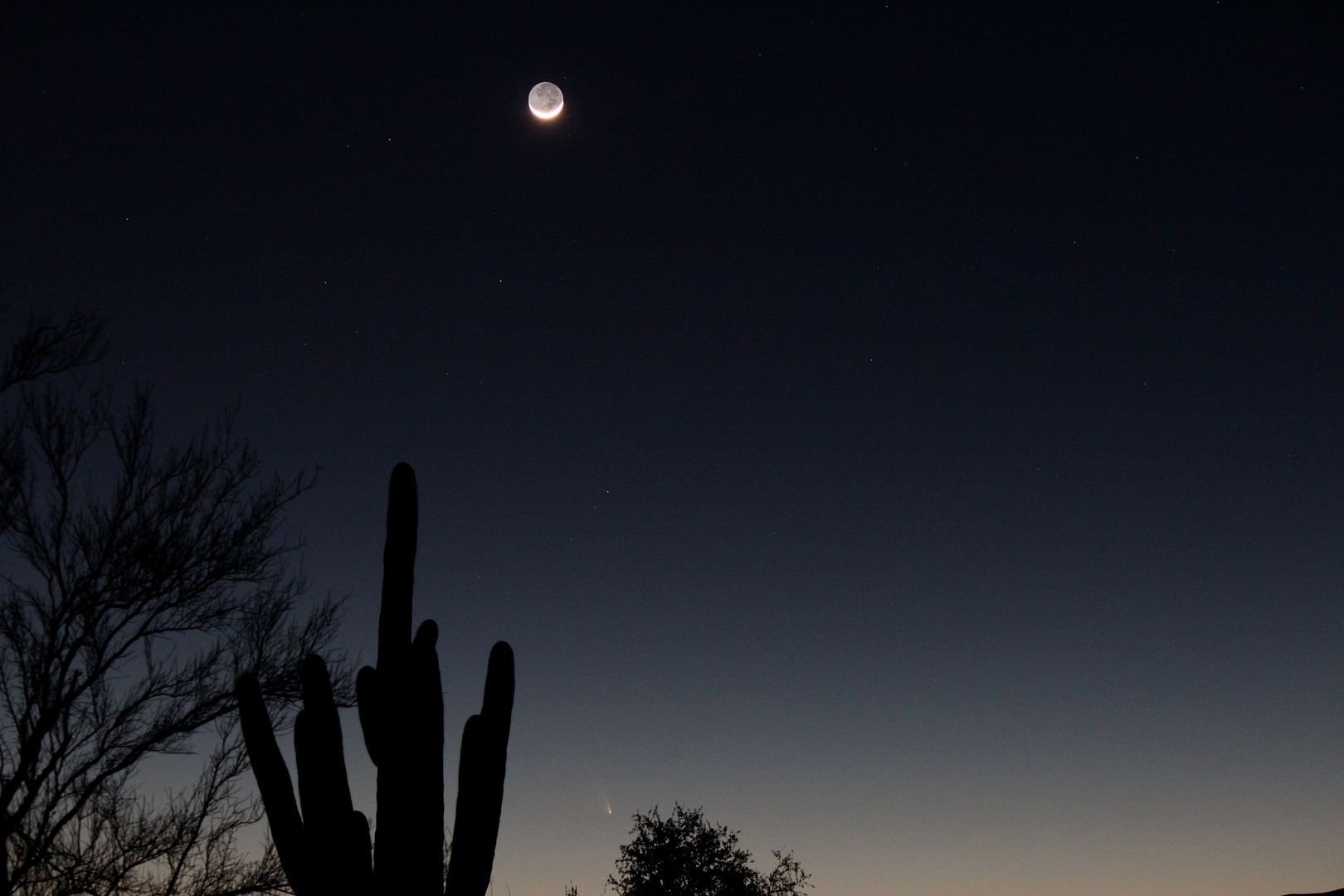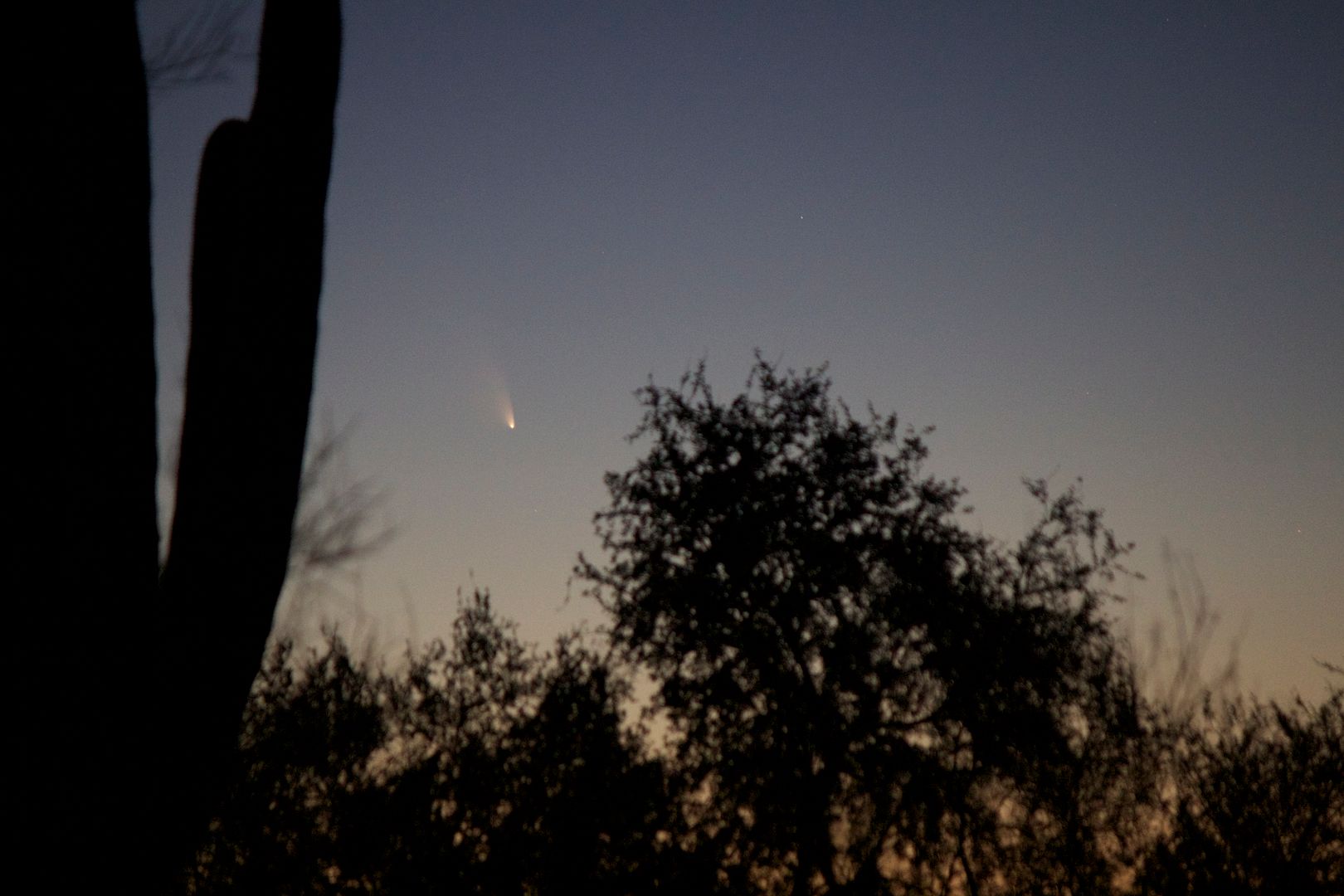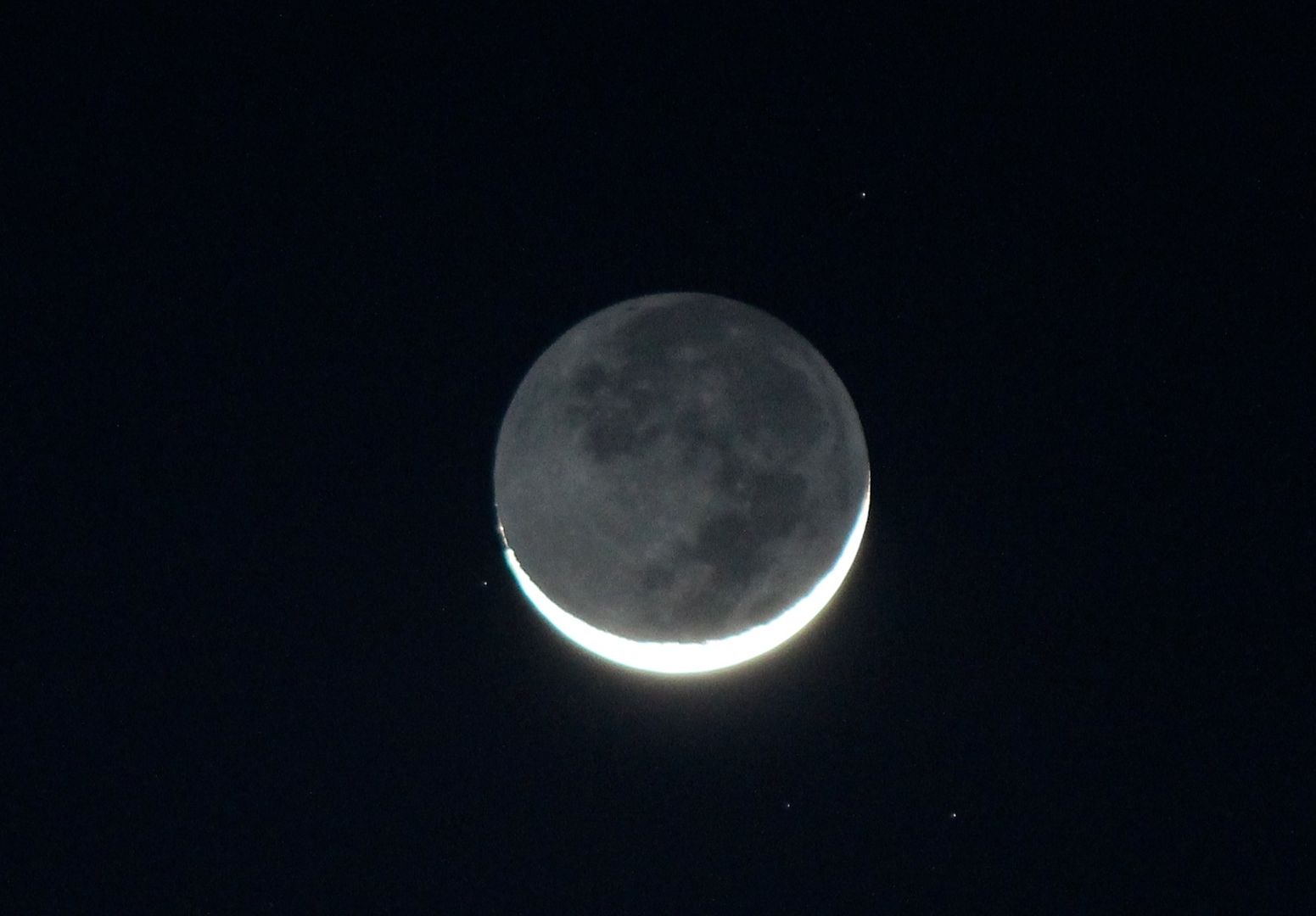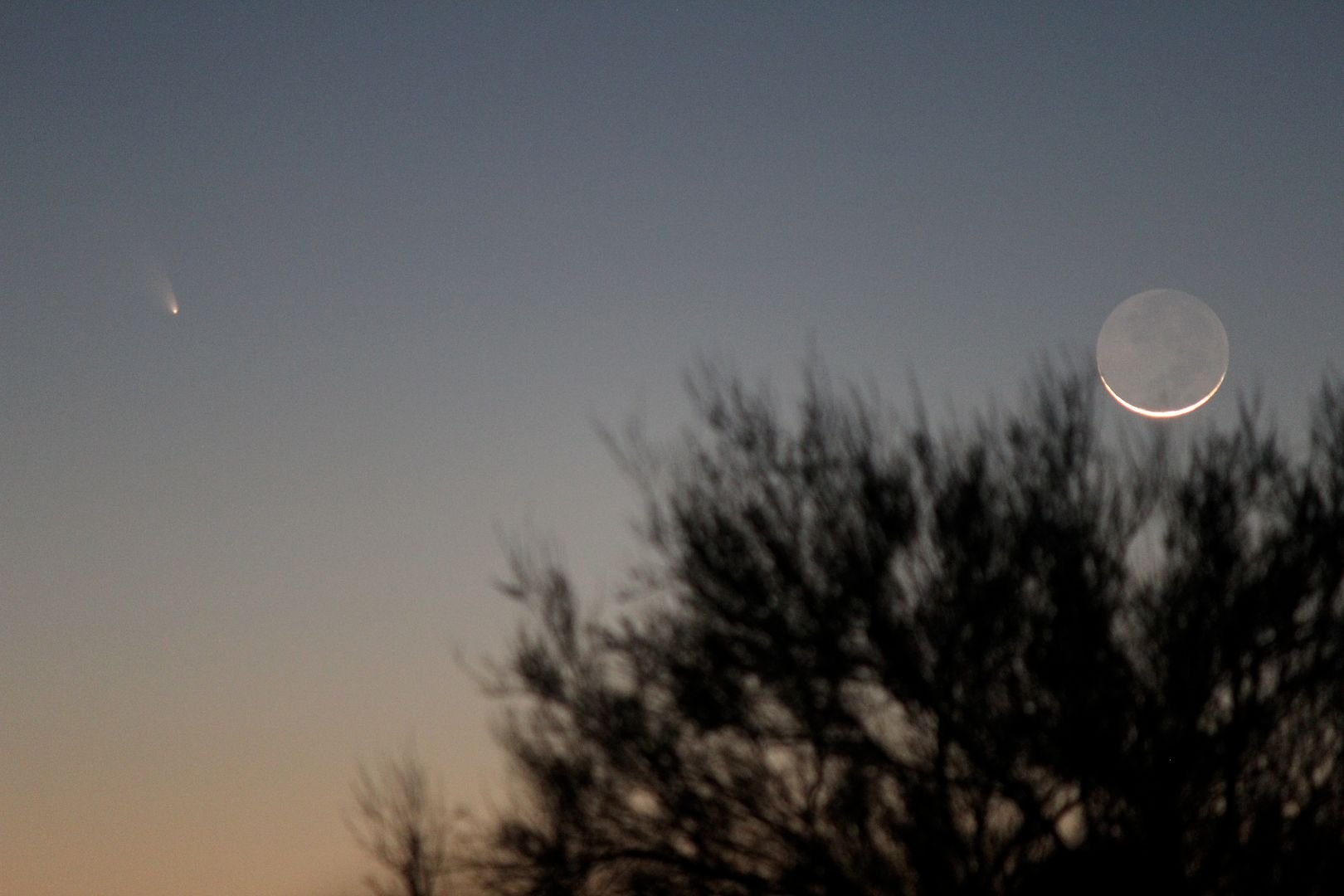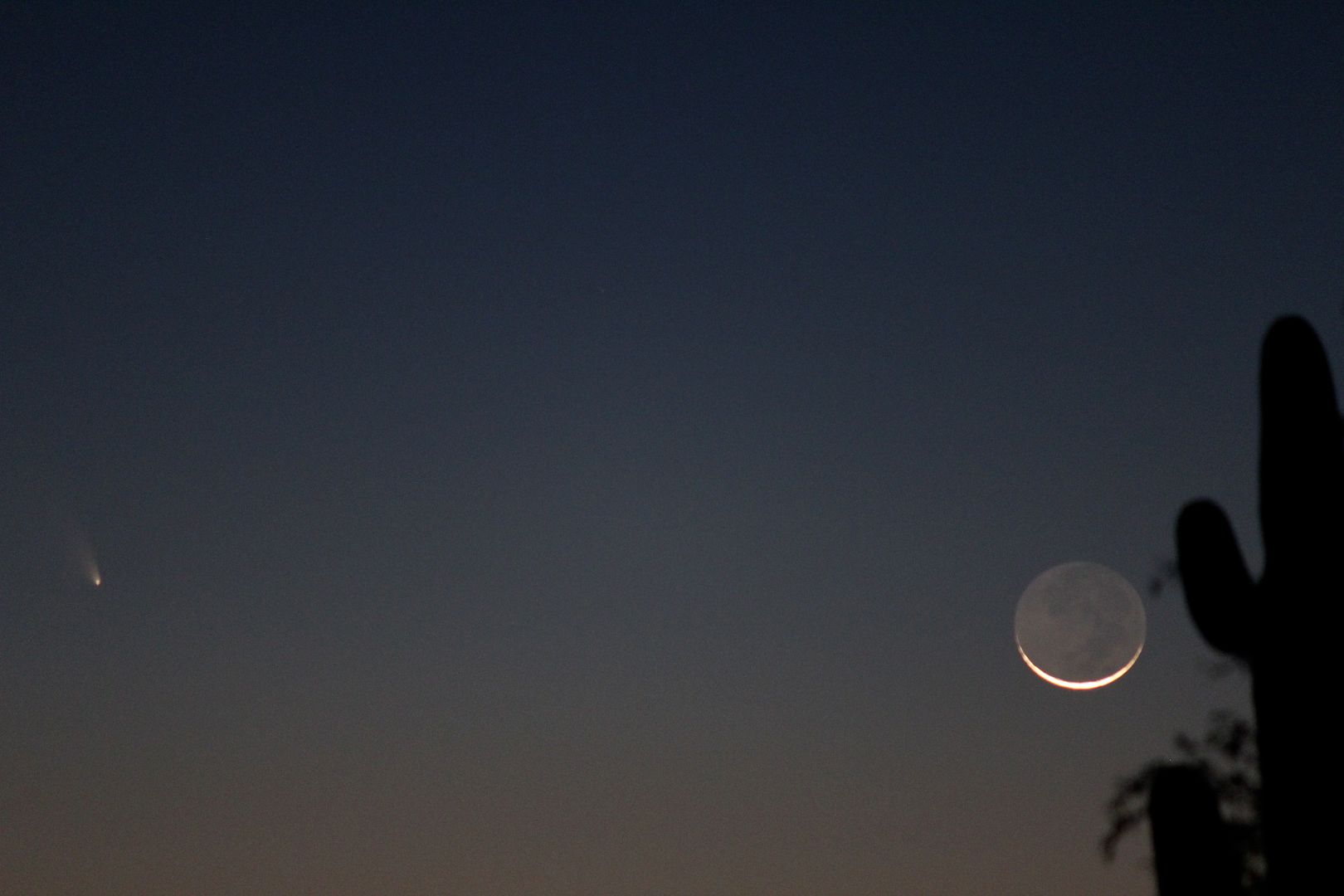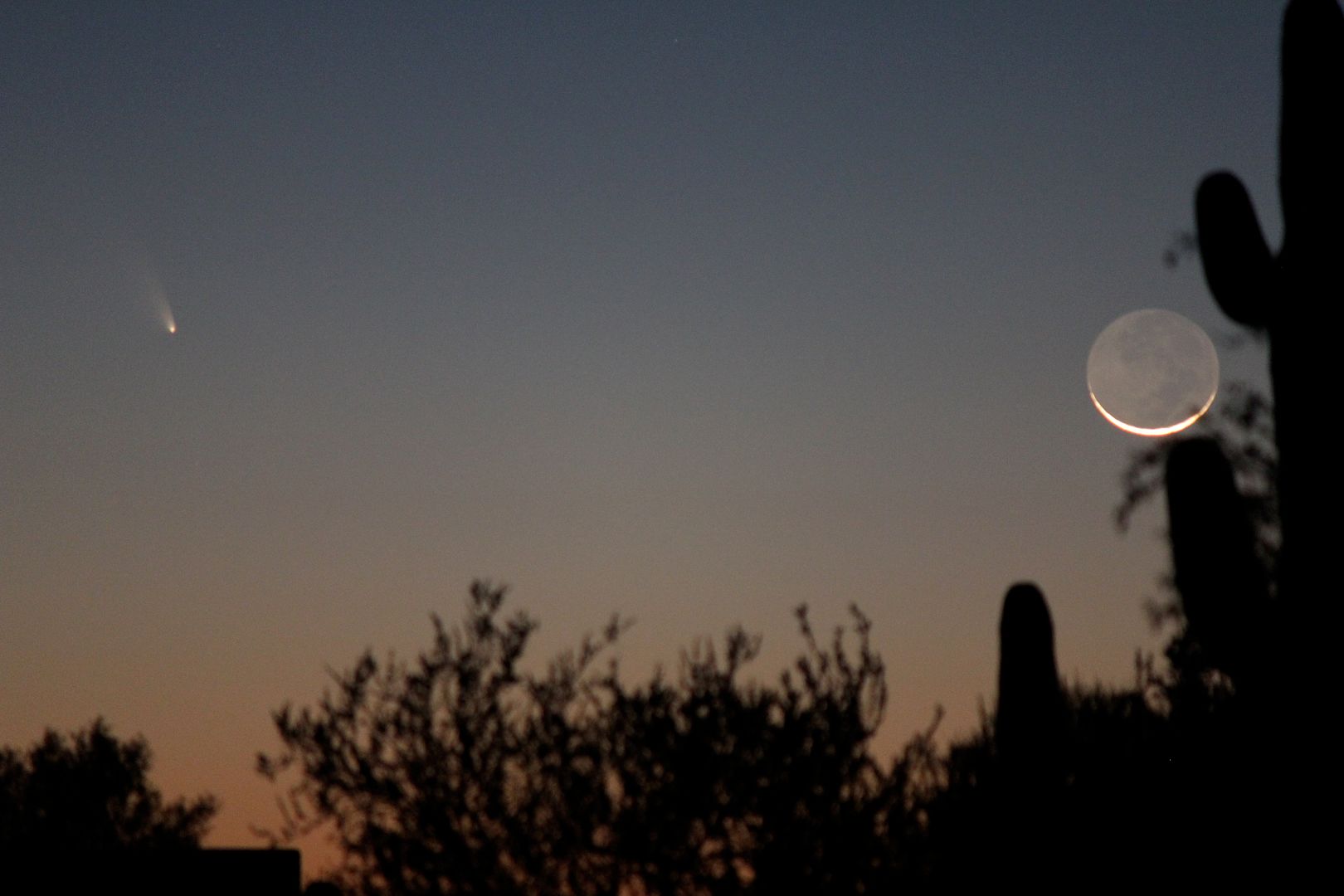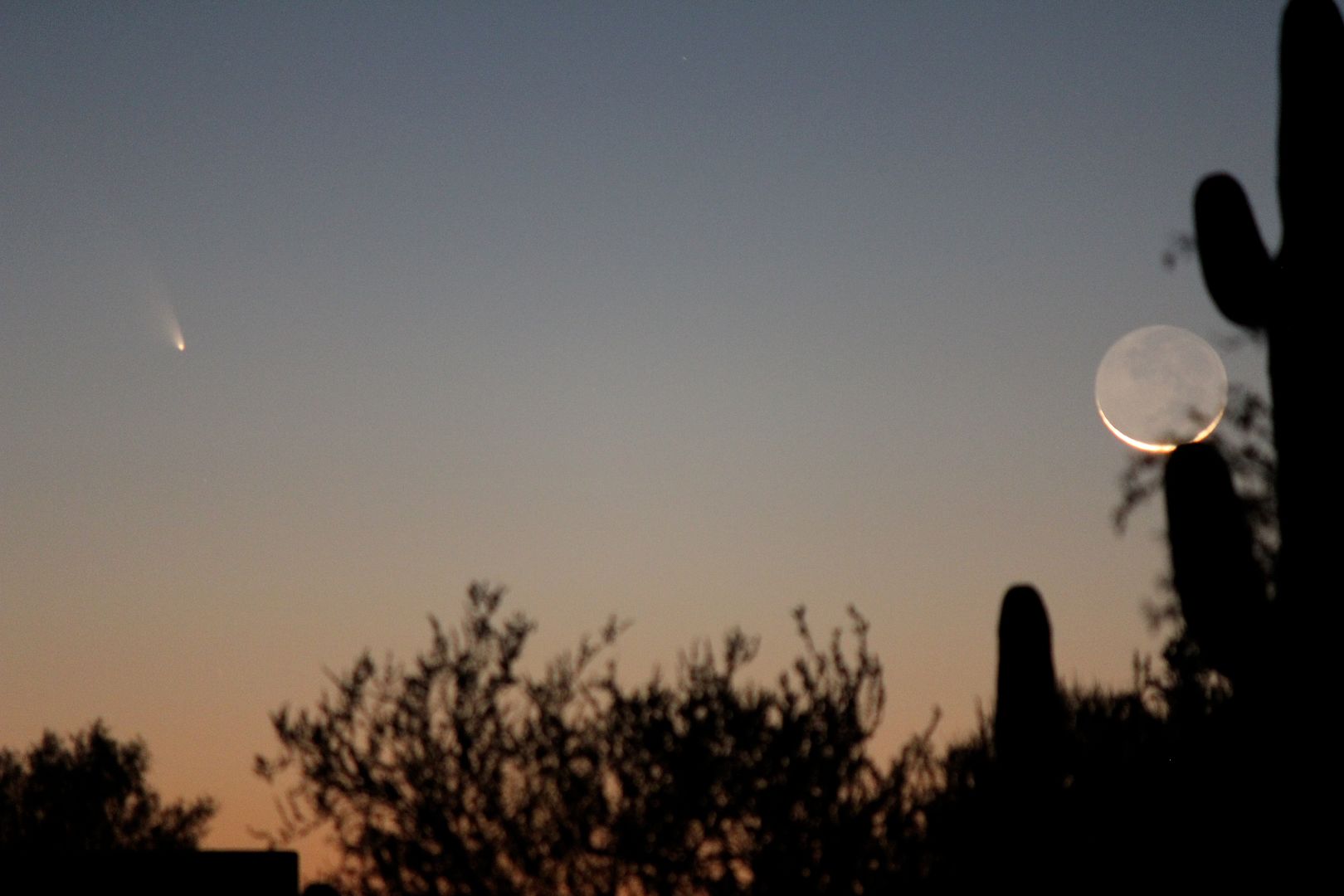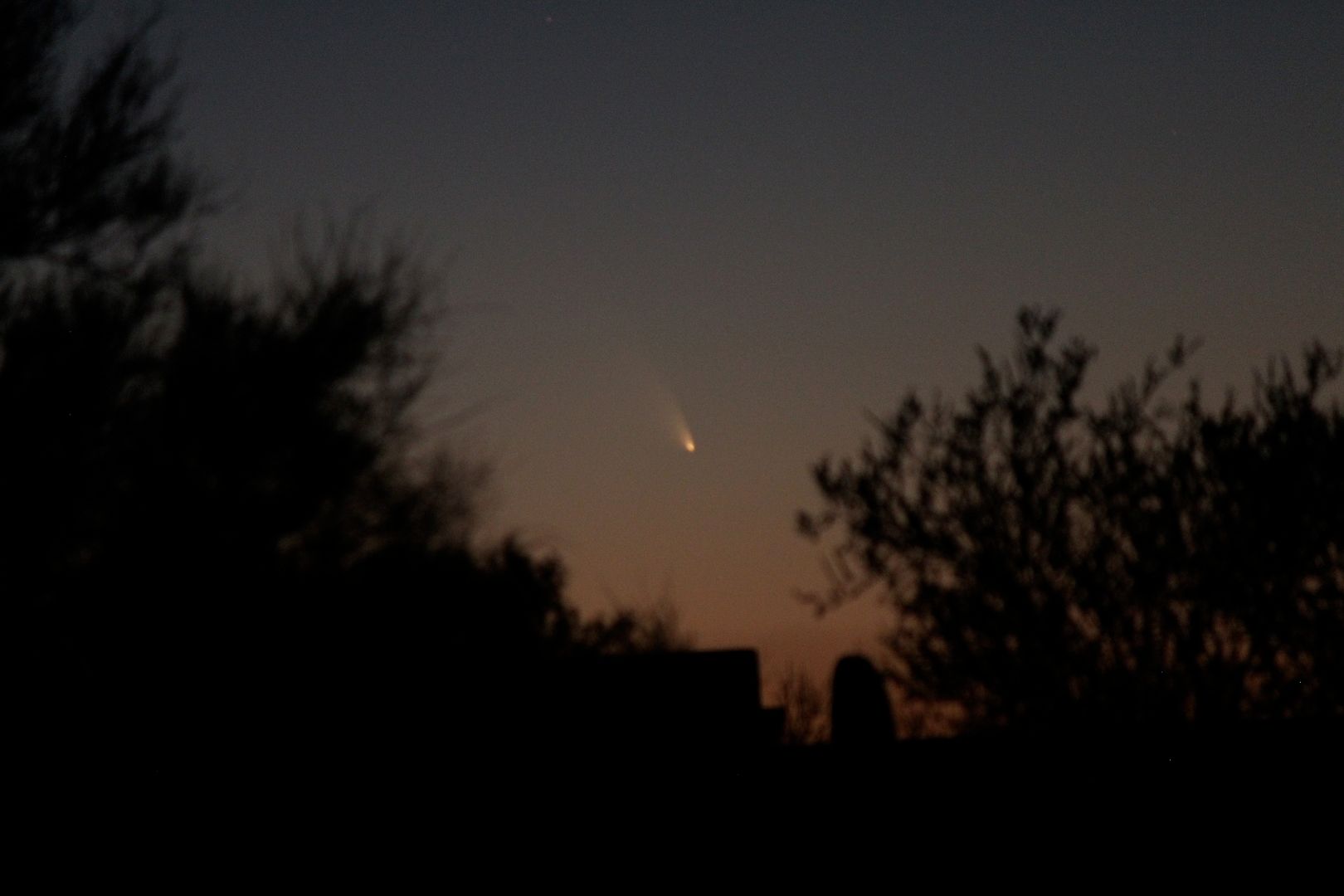In the episode the Enterprise is diverted to Starbase 11 (as seen in Court Martial).
The Starbase looks pretty different this time around, maybe because it is daytime now? I don't know. What I do know is that there is something very familiar in this matte painting that I had never noticed before - Kitt Peak National Observatory's McMath-Pierce Solar Telescope. Can you spot it?
That's the McMath in a photo I took last year, and here it is on the left of this cropped portion of the matte painting used in this episode. The angle is different (sorry about that), but the artwork is clearly based on the real-world telescope. The telescope was dedicated just about four years before this episode was filmed. It is wonderful to see real-life objects inspiring visions of the future.
Kirk, Spock and McCoy beam down and are greeted by Miss Piper who tells them that no message was sent by the Starbase asking them to divert there.
Kirk doesn't seem to mind hearing that there was some sort of mix up as to whether they should be there or not, he's too busy enjoying the view.
Inside, Commodore Mendez explains that the message they apparently received from Captain Pike, couldn't possibly have been sent by him. As they leave to go see Pike, they pass a bit of set dressing that is quite awesome.
Hanging on the wall is a drawing of Jupiter made November 1, 1880 by Étienne Léopold Trouvelot. It is simply stunning. Have a closer look:
Back to Trek.
Captain Pike was horribly injured through exposure to Delta Rays while trying to save some cadets.
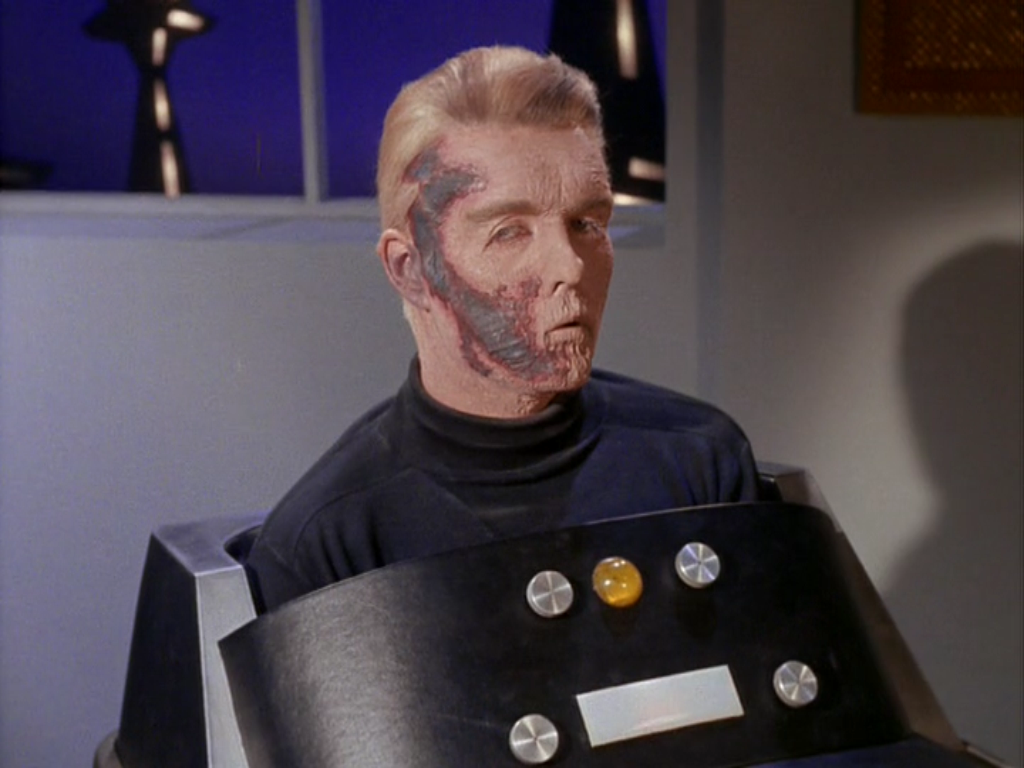 |
| Captain PIke: He's more machine than man. Twisted and evil. |
As McCoy says later: "We've learned to tie into every human organ in the body except one. The brain. The brain is what life is all about. Now, that man can think any thought that we can, and love, hope, dream as much as we can, but he can't reach out, and no one can reach in."
I can't help but thinking that in real life we are on the verge of major microprocessor-enabled breakthroughs that will transform the lives of people conditions similar to Pike's. There is news on this front all the time and one needs to look no farther than Stephen Hawking to see how computers have enabled him to communicate.
It seems that the 23rd Century isn't all that advanced in this area, so Spock decided to do something for his former captain.
Spock steps into command areas, sends new orders to the Enterprise's computers, kidnaps Pike and effectively steals the starship putting it on a course for Talos IV - the one forbidden world in all the galaxy.
Check out Starfleet Command's Top Secret report on the planet:
"Talos IV is in third quadrant of vernal galaxy." Yeah, it's pretty much gobbledegook. I guess no one envisioned a future where people would grab stills of the show to read this stuff.
Kirk and Commodore Mendez pursue in a shuttlecraft. When Spock determines that they can't catch the Enterprise and can't return to the Starbase that he places himself under arrest. But the ship is still under the control of the computers and Spock has locked out access.
A general court martial is held with Mendez, Kirk, and Pike serving as the command rank officers as Spock is tried for mutiny.
This provides the excuse for the events of The Cage to play out as we learn what happened to Captain Pike when he brought the Enterprise to Talos IV 13 years earlier. By the way, I am not going through those events here again. If you want to read what I wrote about The Cage, follow the link.
As we later learn the entire trial was a diversion. Commodore Mendez was never even on board. The mental powers of the Talosians created the illusion to keep Kirk from regaining control of the ship.
The reason for it all? Pike's condition and Spock's devotion to his former captain. The Talosians mental powers can give him the illusion of a full life unfettered by his condition.
Pike takes the offer and Spock is off the hook.
Starfleet messages in at the end to say: "Received images from Talos Four. In view of historic importance of Captain Pike in space exploration, General Order Seven prohibiting contact Talos Four is suspended this occasion. No action contemplated against Spock."
That's a little too neat considering Spock attacked two people at the Starbase and took the Enterprise without orders. Still, it is an episode of Trek (well, two) that are worthy of your time.
Next up, Shore Leave.










